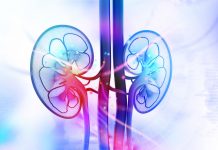Sponsored Content
By Gerald Quigley, Community Pharmacist and Accredited Herbalist. 
A cramp is a powerful, sustained and painful contraction of a muscle or group of muscles. The pain persists until the contraction eases off.
Muscle cramps are common and associated with pregnancy, physical exercise or over-exertion, or age in an older person. Cramps in skeletal muscle can be caused by muscle fatigue, or a lack of electrolytes such as sodium, potassium or magnesium. Cramps are abrupt and severe pain can follow. A cramp can last for minutes or hours.
Some medications, such as diuretics, can also be involved in muscle cramps. Additionally, proton pump inhibitor drugs reduce the body’s ability to absorb magnesium from food. Steroids, HRT, oral contraceptives, caffeine, laxatives, the thyroid hormone and alcohol can also decrease the body’s magnesium levels.
If you’ve ever had a cramp, or been with somebody who suddenly cramps, you’ll realise how painful they can be. A cramp might come on suddenly after a long stretch in bed, after (and sometimes during) exercise or on standing after being seated for a while. Comments from sufferers include that they experience sharp and unexpected pain, a feeling of helplessness if alone, and a fear of further cramps happening.
Despite commonly accepted information, magnesium isn’t the complete cramp solution. Magnesium insufficiency is one of the few main causes of cramps, but the considerations can be a buildup of lactic acid in muscle, poor peripheral circulation and muscular spasms.
Several nutrients can play a role in reducing the risk of cramps:
Magnesium
Magnesium is an essential mineral, important for many biochemical processes in the body. More than half our magnesium is stored in bone, with the remainder stored equally between muscle and non-muscular soft tissue. Good dietary sources include dark leafy vegetables, legumes, wholegrain cereals, nuts, fruit, moist meat, whole full-fat milk, cheese, eggs, cocoa, soy flour and mineral water. However, despite these dietary sources, low levels of magnesium are quite common. We feel this insufficiency as cramps, twitches and spasms.
Ginkgo
Ginkgo biloba is an ancient herb that promotes blood flow through arteries, veins and capillaries. It has a known pharmacological action in improving peripheral circulation while exerting antioxidant and anti-inflammatory activities. Therefore, it supports healthy circulation into muscles throughout the body. According to a study in the American Journal of Medicine, ginkgo extract seems to be just as useful as conventional medications in treating leg cramps caused by a lack of oxygen from an inadequate blood supply.
Viburnum opulus
Viburnum opulus, or cramp bark, is a smooth and skeletal muscle relaxant. It’s valuable as a specific remedy where tension is present, and plays an important role in muscle spasms. An often overlooked aspect of understanding the role of any herb such as viburnum is that it’s not just a single ingredient here. Viburnum contains a number of ‘actives’ that work synergistically to elicit the smooth and skeletal muscle relaxing properties.
Feverfew
Feverfew, like viburnum, contains some biologically active constituents, which combine to act as analgesics and anti-inflammatories. Feverfew also decreases vascular smooth muscle spasm.
Rutin
Rutin is a naturally occurring flavonoid in many foods, especially apricots, cherries, grapes, grapefruit, plums and oranges. Flavonoids play a role in blood vessel strength and help restore an efficient blood supply to an area in spasm.
Vitamin B3
Vitamin B3, also known as niacin, increases lactic acid clearance. In general terms, lactic acid is the normal endpoint of the anaerobic breakdown of glucose in the tissues. Lactic acid buildup occurs when there’s not enough oxygen in the muscle to produce energy. Lactate buildup is felt as muscle soreness after the cramp, or after strenuous exercise.1
Vitamin B5
Vitamin B5, or pantothenic acid, is found in meats (especially liver), egg yolk, broad beans, legumes and potatoes, and in royal jelly. It helps cramps where there is a “burning” feeling in the area. Vitamin B5 also plays a role in settling lactate levels.2
So, what does all this mean?
Discussions with people who want help with cramps will help you understand the underlying reasons for their discomfort. Magnesium is the core nutrient in solving the cramp itself, but there are other nutrients that address the underlying causes.
Remember that we aren’t in the ‘selling’ business, we’re in the ‘problem-solving’ business, and there are fundamental differences in each concept.
Learning the ‘history’ of a person’s cramp background will enable you to offer the best option. Helping a person to become cramp free restores their quality of life and their quality of sleep.
Explain why you’re offering a certain option, to help that person understand your reasoning. Seek feedback within a week or so, to check that the outcome is the expected one – the one that you have genuinely offered, based on your knowledge of the cramping process.
Make a difference to that person and you have a loyal follower from then on.
References
- ‘Niacin in the central nervous system’. Int J Mol Sci, 2019; 20 (4): 974.
- Litoff et al. ‘Effects of pantothenic acid supplementation on human exercise’. Med Sci Sports Exercise, 1985; 17: 287.
Text by: Gerald Quigley, Community Pharmacist and Accredited Herbalist/Crampeze






